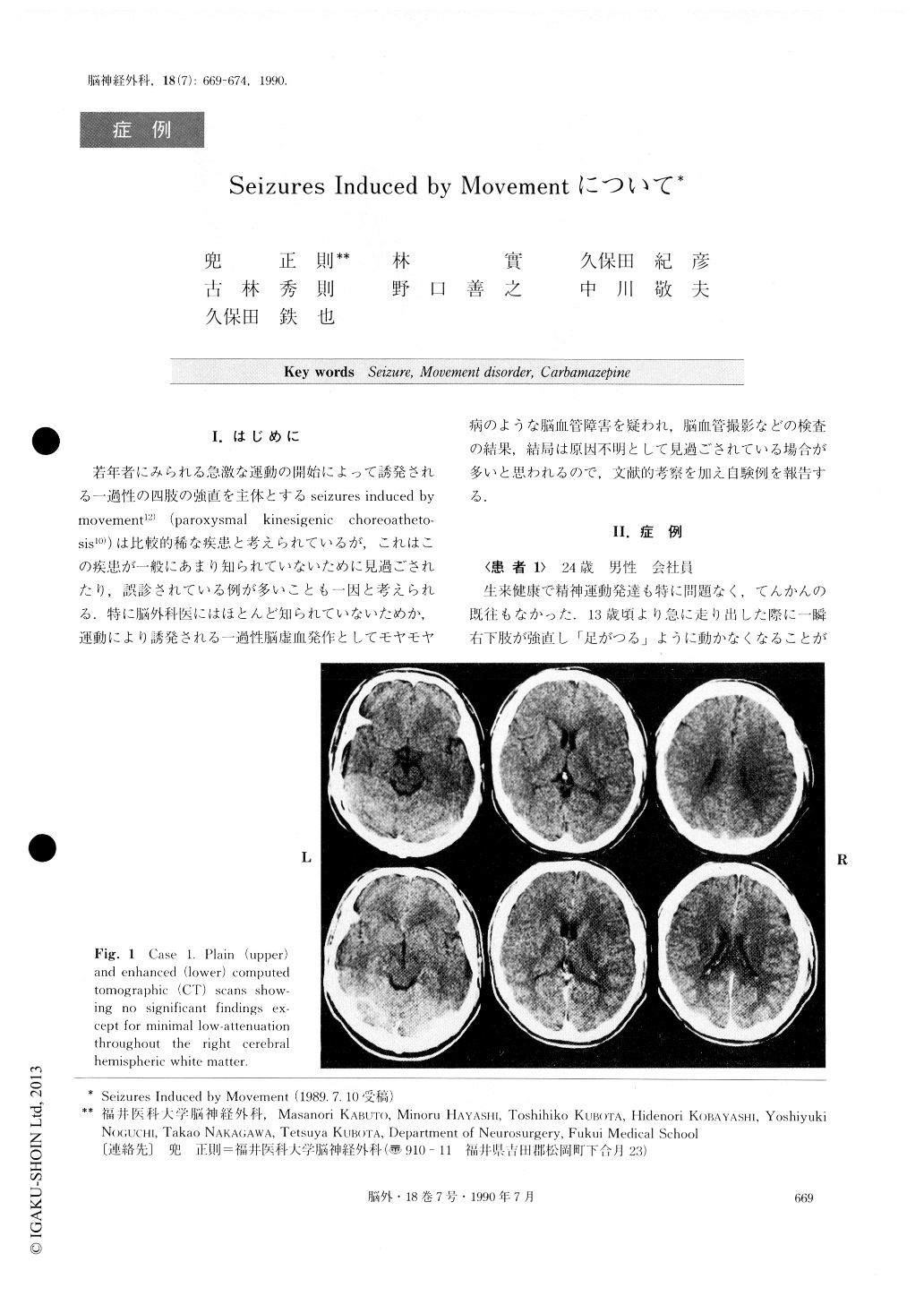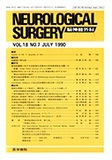Japanese
English
- 有料閲覧
- Abstract 文献概要
- 1ページ目 Look Inside
I.はじめに
若年者にみられる急激な運動の開始によって誘発される一過性の四肢の強直を主体とするseizures induced bymovement12)(paroxysmal kinesigenic choreoatheto—sis10))は比較的稀な疾患と考えられているが,これはこの疾患が一般にあまり知られていないために見過ごされたり,誤診されている例が多いことも一因と考えられる.特に脳外科医にはほとんど知られていないためか,運動により誘発される一過性脳虚血発作としてモヤモヤ病のような脳血管障害を疑われ,脳血管撮影などの検査の結果,結局は原因不明として見過ごされている場合が多いと思われるので,文献的考察を加え自験例を報告する.
Three cases with seizures induced by movement are presented. These patients were a 29-year-old man, a 15-year-old girl and a 15-year-old boy respectively. In each case, the onset began at the age of thirteen. The follow-ing characteristics were observed in all cases. The attacks were precipitated by sudden initiation of volun-tary movement after rest. The attacks were brought on, for instance, by running quickly from a standing posi-tion, and were characterized by tonic spasm or choreoathetotic movement of unilateral extremities. They lasted only 5- 10 seconds, without loss of con-sciousness and occurred up to ten times daily. Between the attacks there were no abnormalities. Neurological examination and laboratory findings were all negative. EEG at rest showed normal findings in two cases and abnormality in one case. Cerebral angiograms did not show any abnormalities in any of the cases. On CT scans and MRI, mild dilatation of lateral ventricles was observed in one case. One of these three cases was familial. Concerning treatment, carbamazepine was the most effective means to inhibit the attacks in all threecases.
Seizures induced by movement may suggest moyamoya disease to neurosurgeons who are not fami-liar with this disease, so it is important to be able to re-cognize this disease when it is encountered.

Copyright © 1990, Igaku-Shoin Ltd. All rights reserved.


